Samsung is taking a big leap into the unknown with its new flagship smartwatches, the Galaxy Watch 4 and Galaxy Watch 4 Classic. The company is canning its familiar Tizen operating system in favor of the new Wear OS it co-developed with Google. We’re still learning a lot about the software, but one thing’s for certain: Samsung clearly put its all into the new Samsung Galaxy Watch 4 line.
Samsung Galaxy Watch 4 and Galaxy Watch 4 Classic at a glance
Samsung’s best smartwatch, now with Wear OS
-
$ at Amazon
Save
$249
.99
-
$ at Samsung
Save
$249
.99
-
$ at Best Buy
Save
$249
.99
-
$ at Verizon
Save
$299
.99
-
$ at AT&T
Save
$299
.99
The classiest smartwatch Samsung has to offer
-
$ at Amazon
Save
$349
.99
-
$ at Samsung
Save
$349
.99
-
$ at Best Buy
Save
$349
.99
-
$ at Verizon
Save
$399
.99
-
$ at AT&T
Save
$399
.99
This year, Samsung is launching two smartwatches: the Samsung Galaxy Watch 4 and the Samsung Galaxy Watch 4 Classic. For the most part, the two feature similar specs and design cues but are built for different users.
The Samsung Galaxy Watch 4 is the spiritual successor to the Galaxy Watch Active 2. (It just has a nicer name this time.) It’s the sporty one, and comes in better colorways and has an overall smaller form factor. The Samsung Galaxy Watch 4 Classic is the direct successor to last year’s Galaxy Watch 3. It’s bigger, classier, and simply offers more.
Catch up: Samsung Galaxy Watch 3 review | Samsung Galaxy Watch Active 2 review
The physical rotating bezel — which we adore — returns on the Galaxy Watch 4 Classic, while the vanilla Galaxy Watch 4 has a touch-enabled bezel similar to that of the Active 2.
Both devices have bigger, brighter displays than before, offer longer battery life, and have new health features that aim to give you a more holistic view of your current health conditions. Again, these are also the first two devices with the new Wear OS on board.
Samsung Galaxy Watch 4 and the new Wear OS
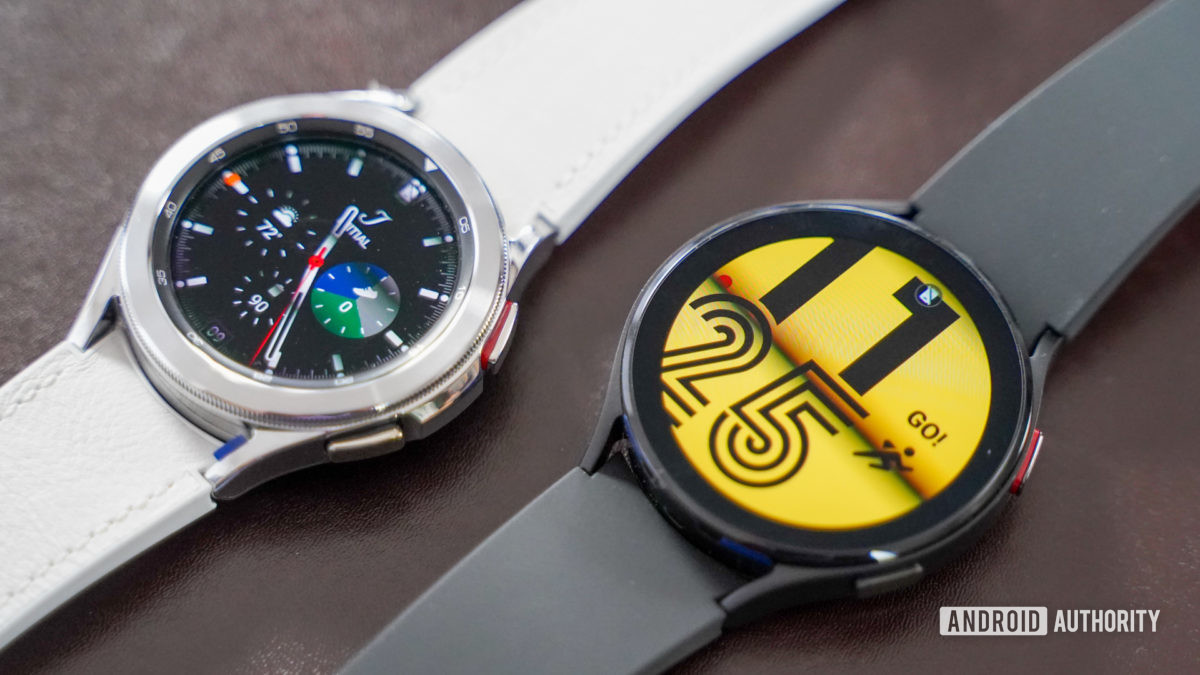
There are a lot of new things to talk about in design, health and fitness, and software, but we all know why you’re here — to see the new Wear OS.
The Galaxy Watch 4 series now runs on Google’s new Wear OS platform with Samsung’s One UI Watch overlay. This is the first time Google is allowing OEMs to customize the look and feel of the smartwatch platform. This means the software on Samsung’s new watches will look much more like the version of One UI that appears on its smartphones. That could be a good or a bad thing depending on how you feel about Samsung’s design language. Still, it should allow for more customization options throughout the entire OS, which includes a way to theme your watch to match your Samsung phone.
Don’t miss: Everything you need to know about Wear OS
Thanks to the Wear OS software, the new Galaxy Watches will now sync important settings from your paired smartphone and auto-install compatible smartphone apps on your watch. Just think, when you sync your Galaxy Watch 4 for the first time, Spotify or YouTube Music will automatically install on your watch, simply because you have it installed on your phone.
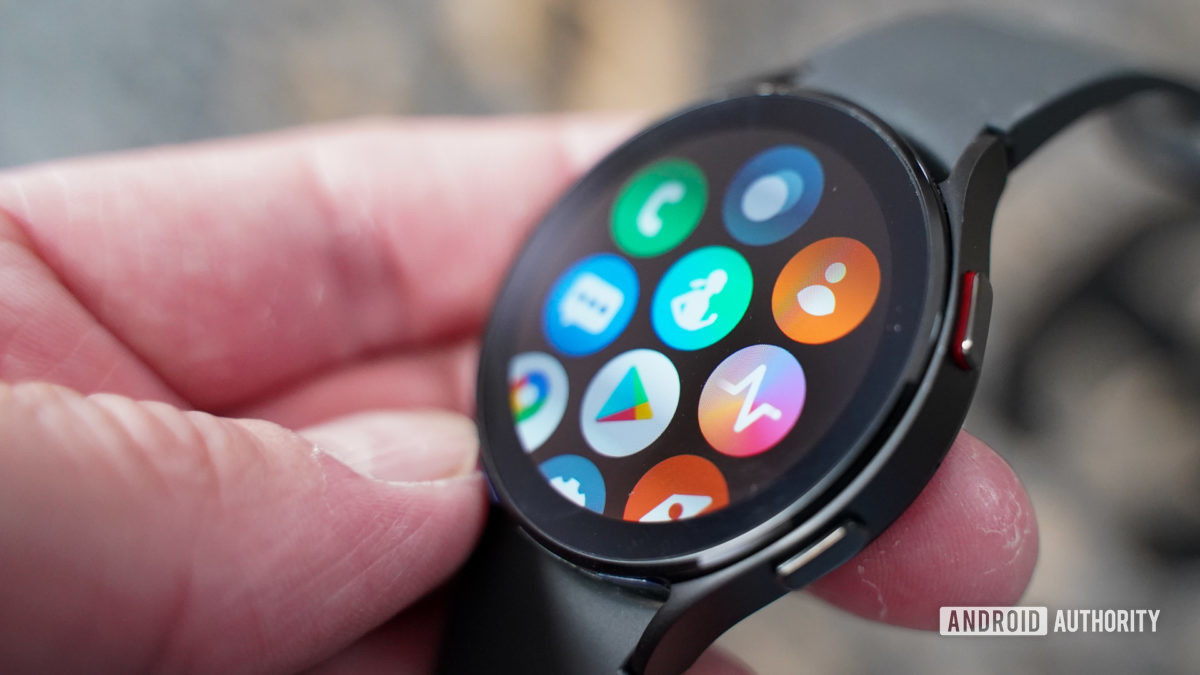
Speaking of apps, the addition of Wear OS means more Google apps are now available on Samsung’s smartwatches. There’s YouTube Music with offline listening support, Google Maps for turn-by-turn directions, as well as other popular Wear OS staples like Strava, Adidas Running, and more. Samsung Pay is also available on both Galaxy Watch 4 models, and users can download Google Pay if they’d rather use Google’s payment service. Unfortunately, there’s no MST support this time around, so you’re working with NFC payments only.
Wear OS also has a much larger app library than the Tizen platform. If you couldn’t find the right app on your older Samsung smartwatch, there’s now a good chance it’ll be available on the Galaxy Watch 4.
Further reading: The best Wear OS watches | The best Wear OS apps
We’re still diving into the Wear OS interface on the Galaxy Watch 4, but Samsung notes that it will be much easier to answer and dismiss calls and alerts thanks to its redesigned on-screen gesture controls. It also implemented a new quick-access widget — accessible from the watch face — that will let you check your connected earbuds‘ battery, manage touch controls, and change noise cancellation options straight from your watch. Also, the Galaxy Watch 4’s hardware buttons will let you toggle between recent apps, just like on your phone.
Android Authority asked Samsung about its update commitment with the new Wear OS software, specifically how often it’ll release major OS or security updates to the watches. The company said it could not commit to a schedule at this time but will fix bugs “as they pop up.”
Samsung Galaxy Watch 4: Design, hardware, and aesthetics
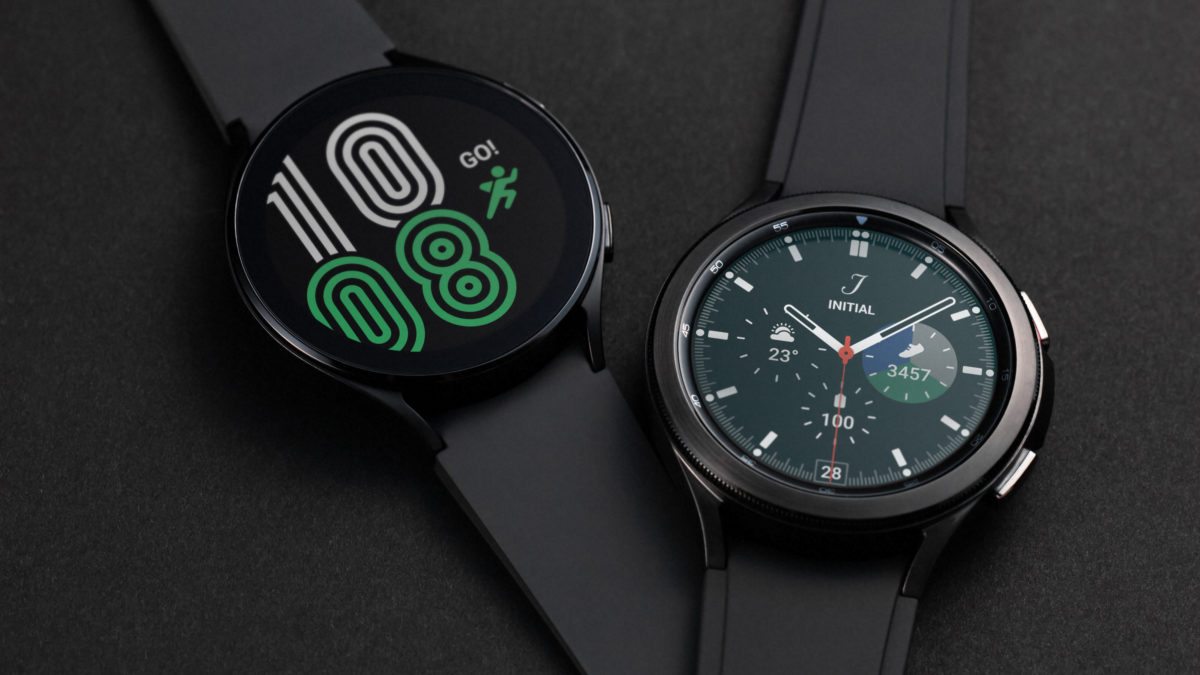
That was a lot of software talk, so let’s go over what’s new in hardware and aesthetics. The Galaxy Watch 4 and Classic models offer different designs and are made for different users.
Both Galaxy Watch 4 models offer thinner cases than their respective predecessors — good news if you weren’t a fan of the Galaxy Watch 3’s bulkier design. The Galaxy Watch 4 is made of aluminum, and the Watch 4 Classic has a stainless steel case. You’ll also notice the bigger overall footprint of the Classic model, thanks to the rotating bezel for navigating around the interface. You can navigate around the regular Galaxy Watch 4 by swiping along the side of the watch case, but most users will likely just use traditional swipes and taps on the touchscreen.
The Galaxy Watch 4 and Watch 4 Classic are for different users, but you’ll get a great-looking device whichever model you choose.
The Watch 4 and Watch 4 Classic both come in two sizes. The standard model can be configured with a 44mm case and a 1.36-inch display or a 40mm model with a 1.19-inch display. The Watch 4 Classic comes in 46mm or 42mm case sizes, with the same display sizes as the standard Watch 4. All displays in question are AMOLED panels, and they all offer higher pixel densities than their predecessors.
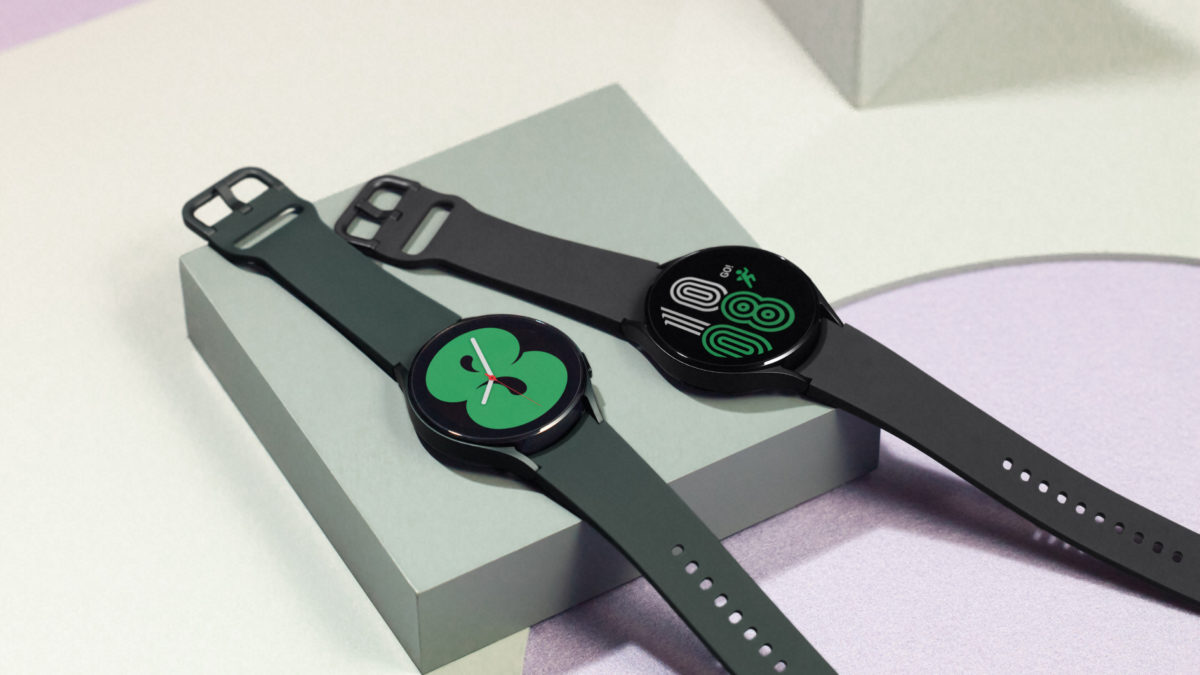
Both of the bigger-sized watches come with 361mAh batteries, while the smaller models have 247mAh batteries. Samsung says all Galaxy Watch 4 devices, no matter which size or model, should last around 40 hours with regular use. We assume that’s with typical use in “smartwatch-only” mode (i.e., no GPS tracking), but we’ll be sure to clarify that point later on. When you’re low on battery, leaving the watch on the charger for 30 minutes will supposedly earn you 10 hours of usage.
Samsung has finally upgraded the SoC, RAM, and storage with the Galaxy Watch 4. All models come with Samsung’s new 5nm Exynos W920 chipset, 1.5GB of RAM (up from 1GB), and 16GB of onboard storage (up from 8GB). The chipset is the big deal, though. Not only is this the first 5nm chipset in a Galaxy watch, the company says it’ll offer a 20% increase in CPU performance. The chip is made with two Cortex-A55 cores and a Mali-G68 GPU. Coupled with 50% more RAM, the Galaxy Watch 4 should have no problem moving through the new Wear OS software.
Good news for always-on display (AOD) users: the new smartwatch chip boasts a dedicated low-power display processor (the Cortex-M55), allowing the main CPU to stay off when in situations that require a small amount of power.
Samsung Galaxy Watch 4: New fitness and health features
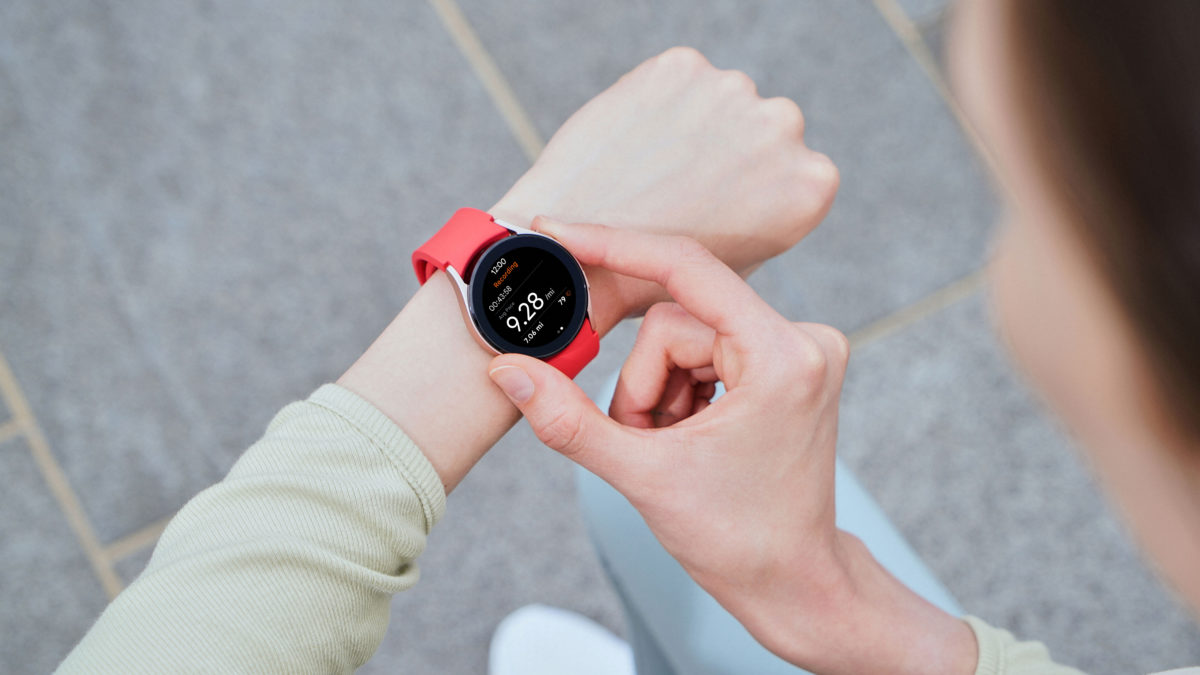
Samsung always tries its best to incorporate all the fitness and health features you could want, but it can fall short at times. This year, Samsung is hoping the new BioActive sensor on the Galaxy Watch 4 line will provide more accuracy than was available in previous watches. The BioActive sensor comprises three hardware sensors: an optical heart rate sensor (PPG), electrocardiogram (ECG), and a bioelectrical impedance (BIA) sensor.
To be clear, the heart rate sensor and ECG hardware are the same sensors that appeared on the Galaxy Watch 3 and Active 2, though Samsung says the algorithm has been greatly improved this time around. We’re hoping that’s the case because heart rate accuracy was one of the main pitfalls of Samsung’s older watches.
The new BIA sensor is worth talking about, though. After 15 seconds of recording, your Galaxy Watch 4 will attempt to determine certain body composition metrics, including your skeletal muscle, basal metabolic rate (BMR), water retention, and body fat percentage. To get proper readings, you’ll need to provide some manual data like your height and weight.
We’re hoping Samsung’s improved algorithms help garner more accurate heart rate data — one of the Galaxy Watch 3’s main pitfalls.
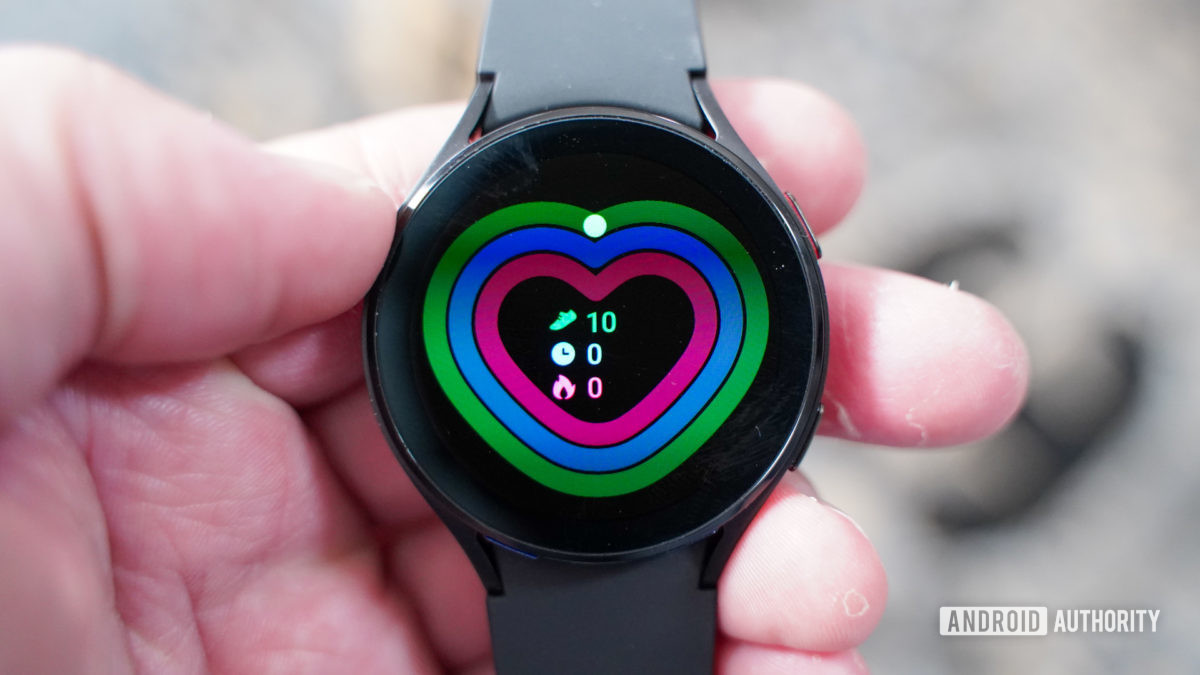
These are all important metrics for determining where you are in your fitness journey, though we’re interested to see how useful the BIA sensor is compared to Garmin’s Health Snapshot feature that first appeared on the Venu 2. Notably, Garmin’s feature leans more towards your body’s physiological wellbeing, while Samsung’s deals more with your current body composition.
Sleep tracking is important for many users, and now that the Galaxy Watch 4 can last over a day on a single charge, it’s likely many owners will wear their watches to bed. The Galaxy Watch 4 series will still track your sleep stages overnight and provide you with a sleep score in the morning. Now, though, the watch works in tandem with your Galaxy smartphone to provide snoring detection in conjunction with blood oxygen readings. Your smartphone can detect your snoring throughout the night and provide that data for you in Samsung Health. You’ll also get blood oxygen data each morning, which now records every minute instead of every 30 minutes as we usually see on fitness watches.
Not much is new on the fitness-tracking front. The Samsung Galaxy Watch 4 series offers carryover features like a digital running coach (which we loved on the Galaxy Watch 3) and VO2 max data. Samsung says automatic workout detection will lock on much faster in this year’s devices.
Samsung Galaxy Watch 4 specs
| Samsung Galaxy Watch 4 | Samsung Galaxy Watch 4 Classic | |
|---|---|---|
| Display | 44mm: 1.36-inch Super AMOLED 450 x 450 resolution 330ppi Corning Gorilla Glass with DX+ 40mm: 1.19-inch Super AMOLED |
46mm: 1.36-inch Super AMOLED 450 x 450 resolution 330ppi Corning Gorilla Glass with DX 42mm: 1.19-inch Super AMOLED |
| Dimensions and weight | 44mm: 44.4 x 43.3 x 9.8mm 30.3g 40mm: 40.4 x 39.3 x 9.8mm |
46mm: 45.5 x 45.5 x 11mm 52g 42mm: 41.5 x 41.5 x 11.2mm |
| Colors and materials | Aluminum case Black, Silver, Green (44mm only), Pink Gold (40mm only) |
Stainless steel case Black, Silver |
| Battery | 44mm: 361mAh 40mm: 247mAh WPC-based wireless charging |
46mm: 361mAh 42mm: 247mAh WPC-based wireless charging |
| Processor | 5nm Samsung Exynos W920 Dual-core 1.18GHz |
5nm Samsung Exynos W920 Dual-core 1.18GHz |
| RAM | 1.5GB | 1.5GB |
| Storage | 16GB | 16GB |
| Connectivity | LTE (available in select models) Bluetooth 5.0 Wi-Fi 802.11 a/b/g/n 2.4+5GHz NFC GPS/GLONASS/Beidou, Galileo |
LTE (available in select models) Bluetooth 5.0 Wi-Fi 802.11 a/b/g/n 2.4+5GHz NFC GPS/GLONASS/Beidou, Galileo |
| Sensors | Accelerometer Barometer Gyroscope Geomagnetic sensor Ambient light sensor Samsung BioActive sensor: optical heart rate (PPG), electrocardiogram (ECG), bioelectrical impedance analysis sensor (BIA) |
Accelerometer Barometer Gyroscope Geomagnetic sensor Ambient light sensor Samsung BioActive sensor: optical heart rate (PPG), electrocardiogram (ECG), bioelectrical impedance analysis sensor (BIA) |
| Durability | 5ATM + IP68 MIL-STD-810G |
5ATM + IP68 MIL-STD-810G |
| Software | Wear OS Samsung One UI Watch |
Wear OS Samsung One UI Watch |
| Compatibility | Android and iOS | Android and iOS |
What are some good Samsung Galaxy Watch 4 alternatives?

Not sold on Samsung’s latest? Luckily, the smartwatch landscape is thriving right now, with plenty of picks out there for those on tight budgets or different operating systems.
- Apple Watch Series 6: The Apple Watch Series 6 is still our top pick for the best smartwatch you can buy, but notably, it only works with iPhones. The Series 6 offers stellar fitness tracking and smartwatch features, though its battery can only last around a day.
- Garmin Venu 2: The Garmin Venu 2 is our favorite fitness smartwatch for Android. It offers lots of sports-tracking modes, a new Health Snapshot feature to show your daily vitals, and supports onboard music storage.
- Samsung Galaxy Watch 3: Samsung’s Galaxy Watch 3 is still going strong. It offers plenty of smartwatch and fitness features, plus it has that wonderful rotating bezel for device navigation. Now that the Galaxy Watch 4 is here, the Galaxy Watch 3 will surely be offered at a discount.
- Fitbit Versa 3: The Fitbit Versa 3 is the cheapest Galaxy Watch 4 alternative, but it’s no slouch when it comes to health-tracking features. It runs Fitbit’s custom OS, though it still supports smart integrations like built-in Google Assistant and Amazon Alexa.
Where to buy the Samsung Galaxy Watch 4
Samsung’s best smartwatch, now with Wear OS
-
$ at Amazon
Save
$249
.99
-
$ at Samsung
Save
$249
.99
-
$ at Best Buy
Save
$249
.99
-
$ at Verizon
Save
$299
.99
-
$ at AT&T
Save
$299
.99
The classiest smartwatch Samsung has to offer
-
$ at Amazon
Save
$349
.99
-
$ at Samsung
Save
$349
.99
-
$ at Best Buy
Save
$349
.99
-
$ at Verizon
Save
$399
.99
-
$ at AT&T
Save
$399
.99
You won’t have to wait long to get your wrist on these new watches. The Samsung Galaxy Watch 4 and Galaxy Watch 4 Classic go up for pre-order Wednesday, August 11 (today) on Samsung.com. The official Samsung Galaxy Watch 4 release date is Friday, August 27. That’s when you’ll be able to buy them in stores and online through various retailers like Samsung.com, Amazon, Best Buy, and more.
Samsung’s watches aren’t cheap, at least initially. Pricing is as follows:
- Samsung Galaxy Watch 4 (40mm Bluetooth-only): $249 / €369 / £369
- Samsung Galaxy Watch 4 (44mm Bluetooth-only): $279
- Samsung Galaxy Watch 4 (40mm LTE): $299
- Samsung Galaxy Watch 4 (44mm LTE): $329
- Samsung Galaxy Watch 4 Classic (42mm Bluetooth-only): $349 / €269 / £259
- Samsung Galaxy Watch 4 Classic (46mm Bluetooth-only): $379
- Samsung Galaxy Watch 4 Classic (42mm LTE): $399
- Samsung Galaxy Watch 4 Classic (46mm LTE): $429
Those who pre-order the Galaxy Watch 4 between August 11 and August 26 will receive a $50 credit from Samsung.
The standard Galaxy Watch 4 comes in Black, Silver, Green (exclusive to the 44mm model), and Pink Gold (exclusive to the 40mm model). The Galaxy Watch 4 Classic only comes in Black and Silver.
You can also buy the LTE-connected Galaxy Watch 4 and Watch 4 Classic directly from US carriers. Details below:
Verizon: The Galaxy Watch 4 goes up for pre-order from Verizon on August 11, starting at $12.49 a month for 24 months. The Watch 4 Classic on Verizon starts at $16.66 a month for 24 months. And if you purchase either watch with a smartphone from Verizon’s website, you can save $150 on your total.
AT&T: The Galaxy Watch 4 and Galaxy Watch 4 Classic go up for pre-order from AT&T on August 11, with availability slated for August 27. AT&T will carry all Galaxy Watch 4 / Classic models in all color options. Pricing for the Galaxy Watch 4 starts at $299.99, while the Galaxy Watch 4 Classic price starts at $399.99.
Top Samsung Galaxy Watch 4 questions and answers
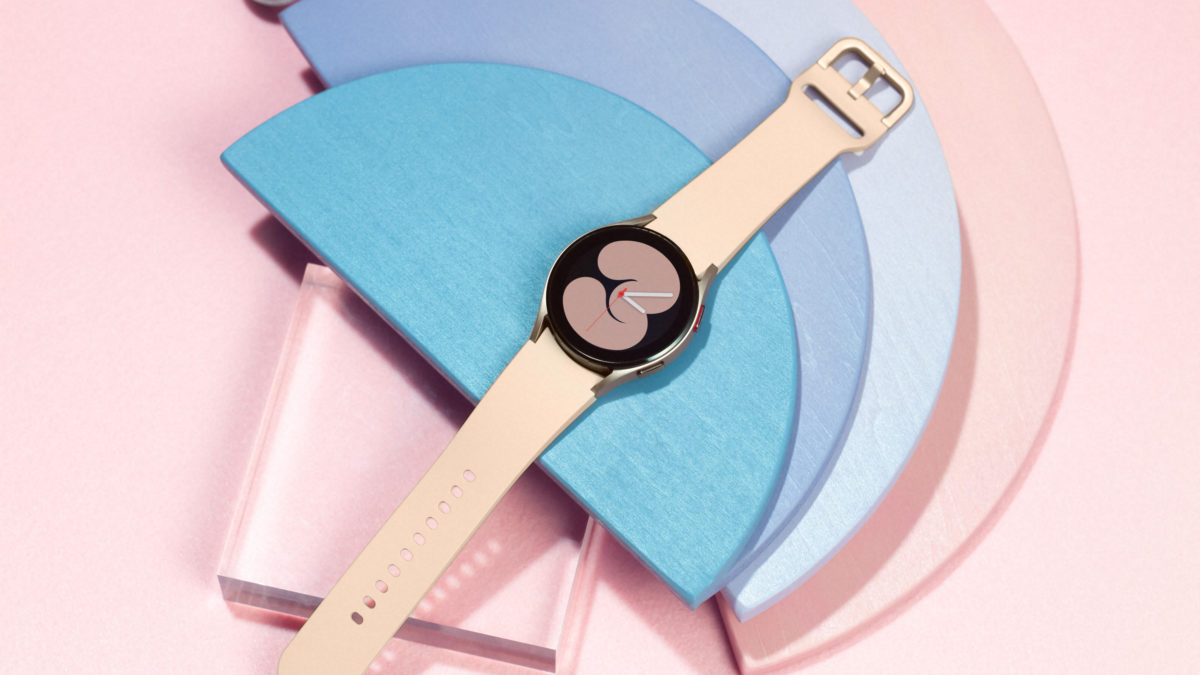
Q: When is the Samsung Galaxy Watch 4 release date?
A: The Samsung Galaxy Watch 4 and Galaxy Watch 4 Classic go up for pre-order on Wednesday, August 11 (today). You can purchase the devices from Samsung.com and other retailers on Friday, August 27.
Q: Can the Samsung Galaxy Watch 4 measure blood glucose levels?
A: No, unfortunately, the Samsung Galaxy Watch 4 cannot monitor blood glucose levels, as was once rumored.
Q: Is there a Samsung Galaxy Watch 4 Active?
A: Yes and no. Technically, the Samsung Galaxy Watch 4 (non-Classic model) is the successor to the Galaxy Watch Active 2 — now it just has a simpler name. You’ll want to buy the vanilla Galaxy Watch 4 if you plan to use the watch for sports and outdoor activities, while the Galaxy Watch 4 Classic is for those who favor aesthetics.
Q: Does the Samsung Galaxy Watch 4 run Wear OS?
A: Yes, the Samsung Galaxy Watch 4 series are the first smartwatches to run the new Wear OS. Samsung’s software overlay is called One UI Watch, which makes the operating system look much more like the software on your Galaxy smartphone.
Q: How quickly can the Galaxy Watch 4 charge?
A: According to Samsung, the Galaxy Watch 4 takes “under two hours” to reach a 100% charge, and 30 minutes on the charger gives you around 10 hours of use.
Q: Does the Samsung Galaxy Watch 4 support 5G?
A: No. While certain Samsung Galaxy 4 models offer 4G LTE connectivity, 5G is not supported. Samsung says that the data sent between smartwatches is quite small (i.e., messages, notifications), so LTE is more suitable than 5G.
Q: Does the Samsung Galaxy Watch 4 work with iPhones?
A: Yes, the Samsung Galaxy Watch 4 can work with both Android and iOS devices.
Q: Can I charge the Samsung Galaxy Watch 4 with my smartphone?
A: Yes, depending on your phone. As long as your smartphone supports Samsung’s Wireless PowerShare (reverse wireless charging), you can use it to charge your Galaxy Watch 4.